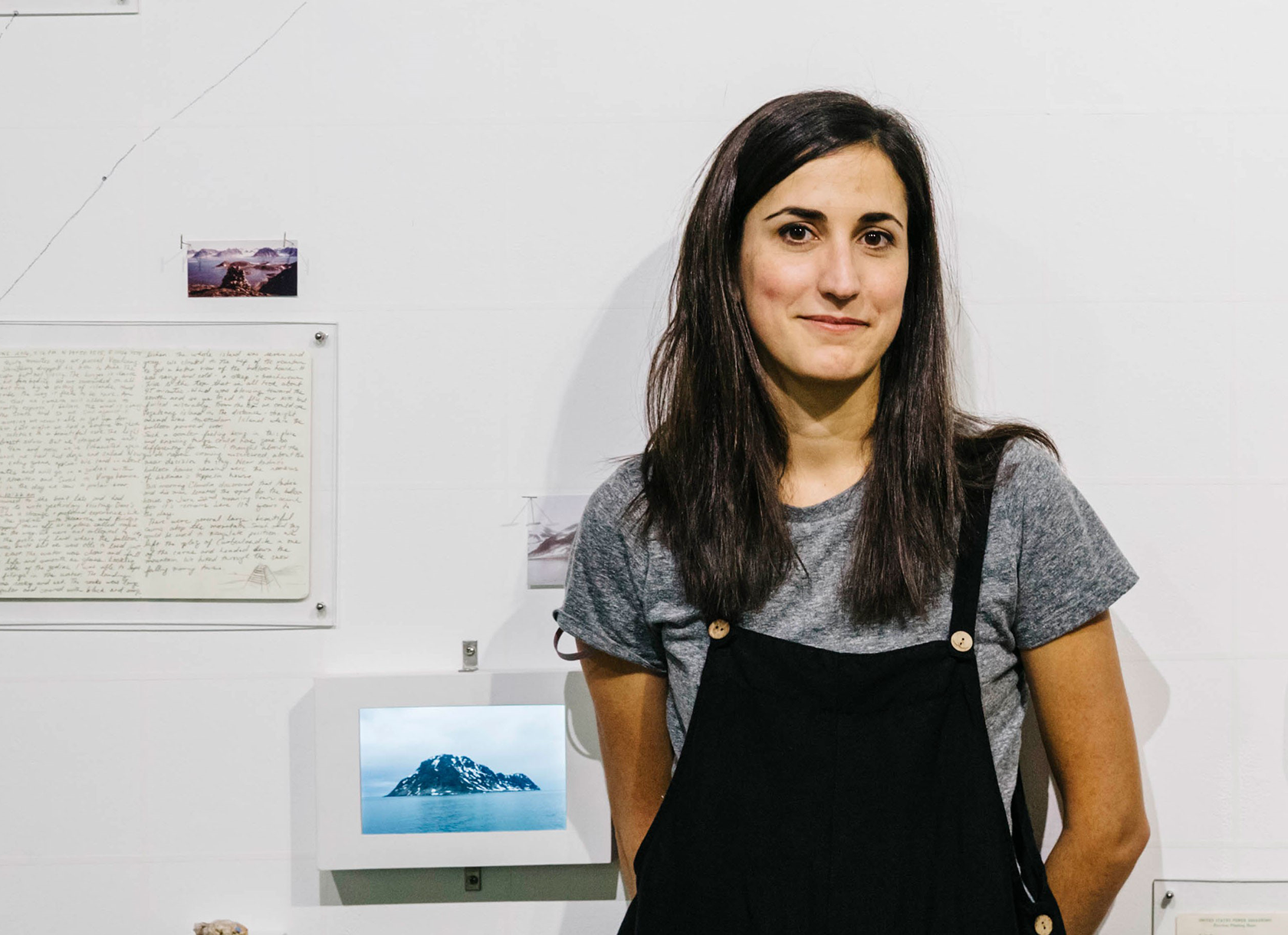
Last fall, three new tenure-track faculty members joined Scripps College. As part of our ongoing series on Scripps’ faculty, the Office of Marketing and Communications sat down with Aly Ogasian to discuss the National Aeronautics and Space Administration (NASA), the Arctic Circle, and road-tripping with a kayak. Ogasian teaches art and media studies at Scripps, and her broader interests include the intersection of the arts and sciences, aerospace, and territories of wonder.
Marketing and Communications: Your work straddles art and science—you’ve received the NASA Rhode Island Space Grant and been accepted to artists’ residencies at the Vermont Studio Center and Hambidge. Can you describe the path that led you to focus on interdisciplinary work?
Aly Ogasian: I grew up in a family where many of my relatives were in the sciences and engineering. My dad worked in aerospace, studying the effect of lightning strikes on airplane engines. It was exciting to go to his workplace and see the labs and equipment and to visit the other facilities that were developing technologies for space travel, such as space toilets and space suits. At the same time, my older sister really encouraged my interest in the arts. Back then, those fields were seen as oppositional, but when I got a bit older, I realized that I was interested in both.
MC: Speaking of space travel, you’ve done a lot of research with and about NASA, albeit here on the ground. Tell us more about those projects.
AO: When I was in my MFA program at the Rhode Island School of Design, I worked for the Design for Extreme Environments studio, which was partially sponsored by NASA, and helped design a low-gravity simulator suit. At that time, I began researching the different NASA facilities, their histories, and the history of technology. Since then, I’ve visited the Johnson Space Center, Michoud Assembly Facility, Stennis Space Center, Santa Susana Field Laboratory, Kennedy Space Center, and NASA Ames. Through this research, I became really interested in the landscape that these facilities exist within, issues of imminent domain and land ownership, and ecological management.
My current work looks at the relationship between climate change, coastal NASA facilities, and the current missions to Mars. In the summer of 2018, my collaborator Shona Kitchen and I lived on an artificial island in Kennedy Space Center, inside of Merritt Island National Wildlife Refuge, as part of an extended performance. These islands were formed when the Intracoastal Waterway [a 3,000-mile inland waterway along the Atlantic and Gulf of Mexico coasts] was dredged starting in 2019; thousands of them exist in the stretch from New York City to Brownsville, Texas. Ironically, although they’re new microcosms that exist adjacent to technologies designed to take us to another planet, they’re not yet mapped or deeply studied.
MC: In 2016, you visited the Arctic Circle as part of a summer solstice expedition. How did that expedition influence your work?
AO: The Arctic Circle expedition had a profound impact on my work. It was really powerful to experience this incredibly remote landscape, and to see how heavily it has been impacted by human activity. It is a place where you can see and hear, through glacial calving, climate change manifest. There are also places where tons of garbage from the ocean systems collect, and it was incredibly meaningful to be able to see these things in person and really be able to quantify and comprehend the human footprint.
MC: What classes are you excited to teach at Scripps?
AO: I’m excited and fortunate to be teaching classes on intermediate and advanced digital art. When we’re back on campus, I look forward to taking students to the new makerspace at Harvey Mudd College, where we can explore how digital art processes can be used to fabricate physical artworks.
MC: What’s one more fun fact that you’d like to share with the Scripps community?
AO: My collaborator and I have driven from Rhode Island to Florida four times with a 23-foot kayak strapped to the roof of her car. We’ve even driven the kayak through snowstorms! It’s really quite a harrowing trip, especially around the bridges in New York City.

